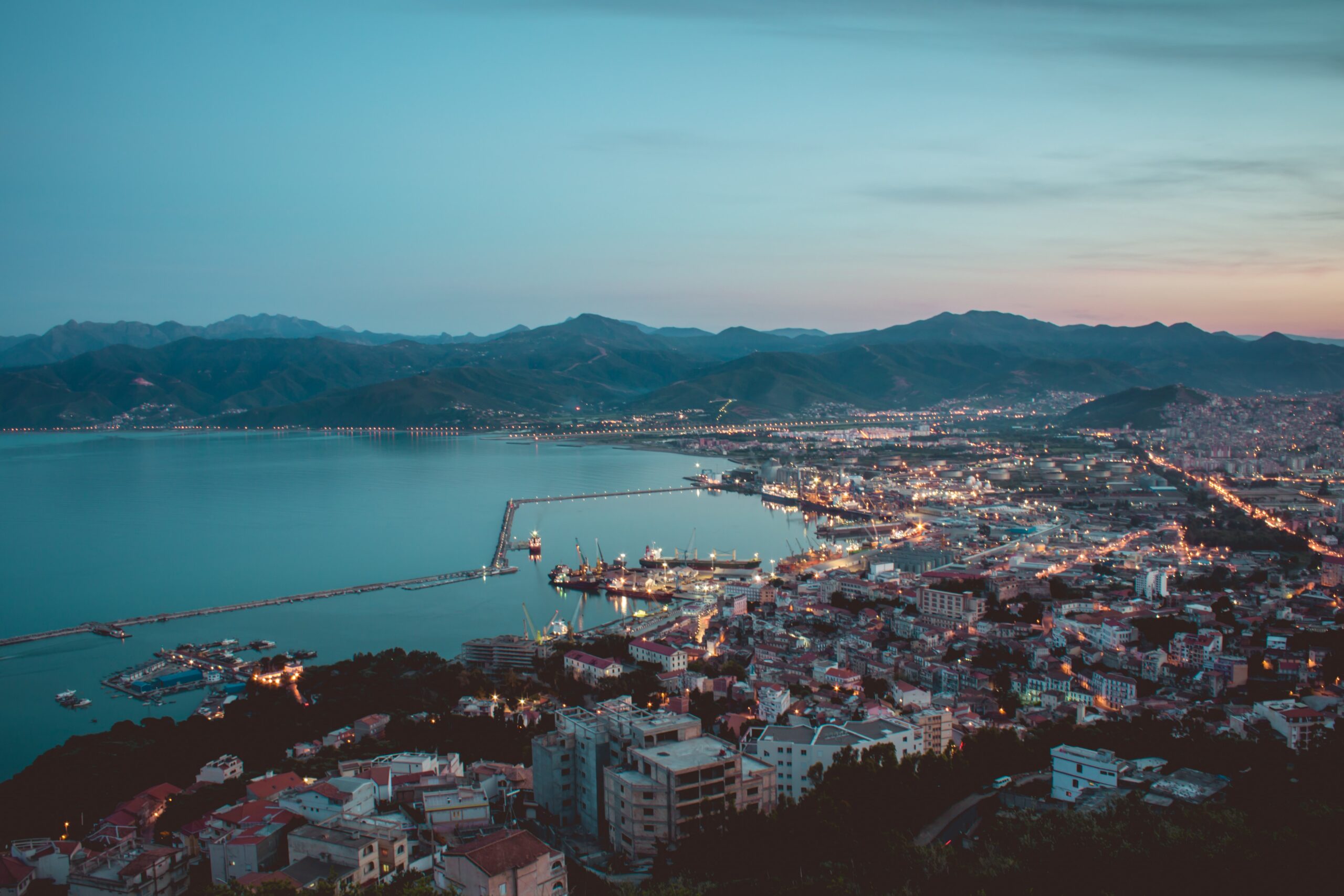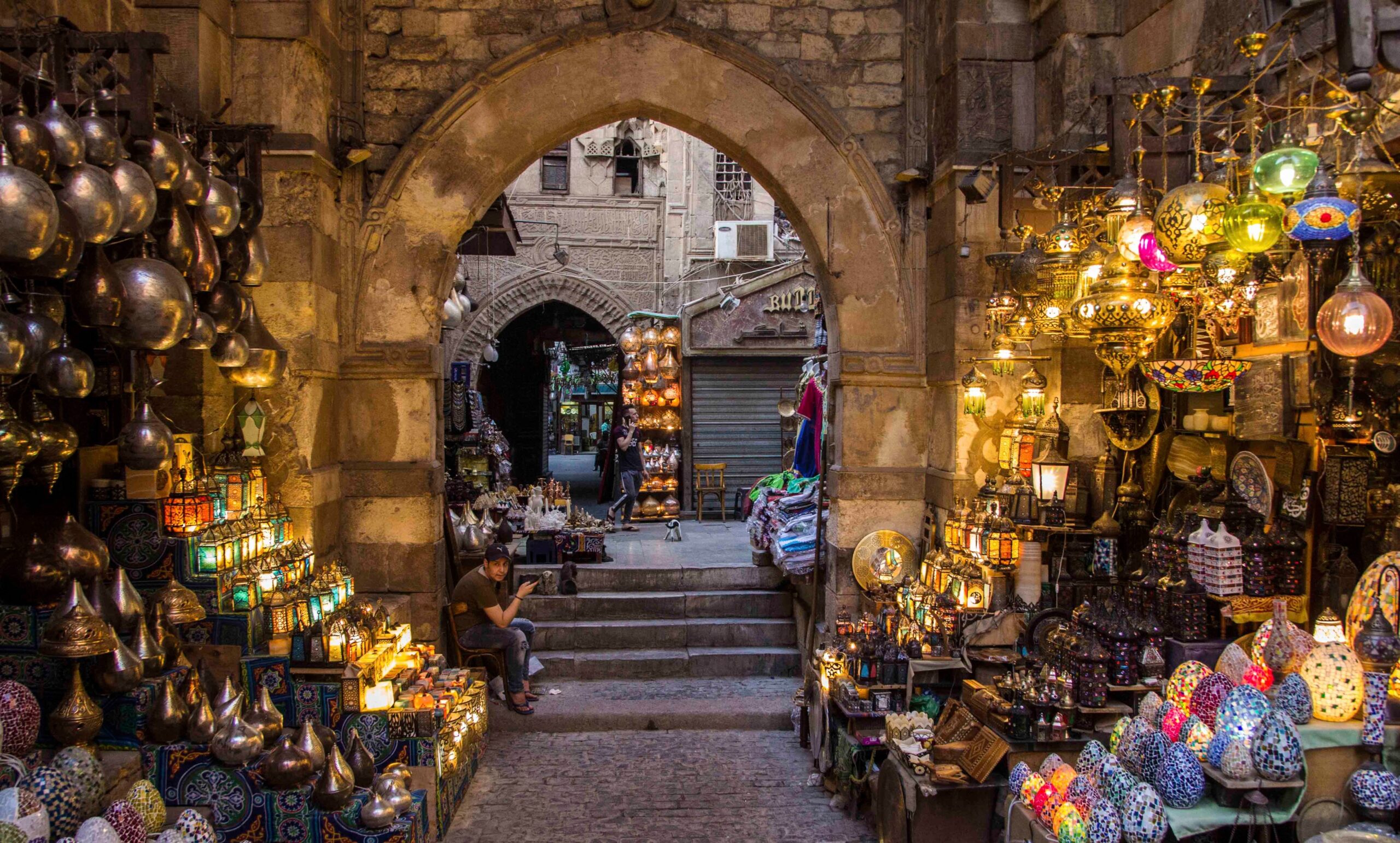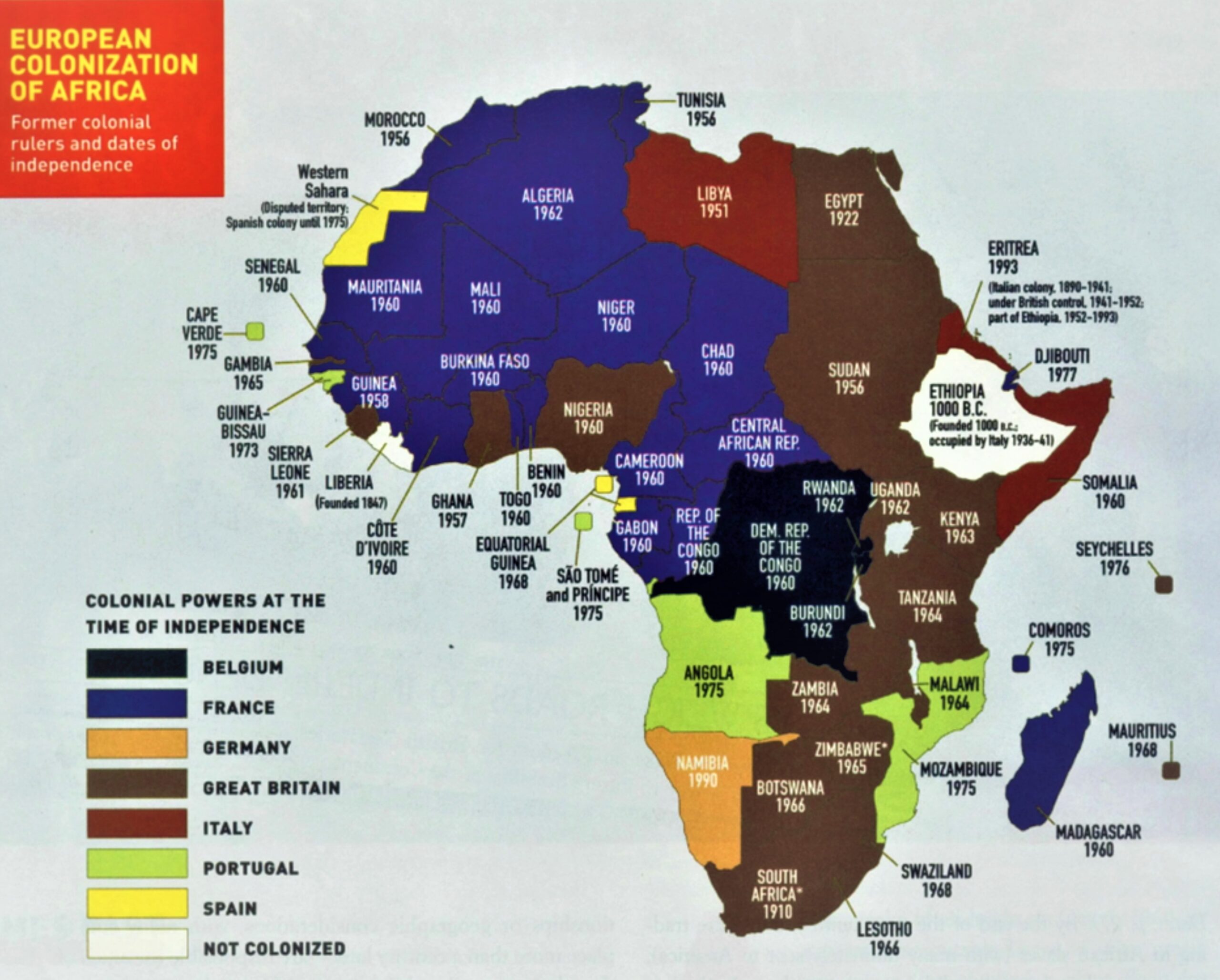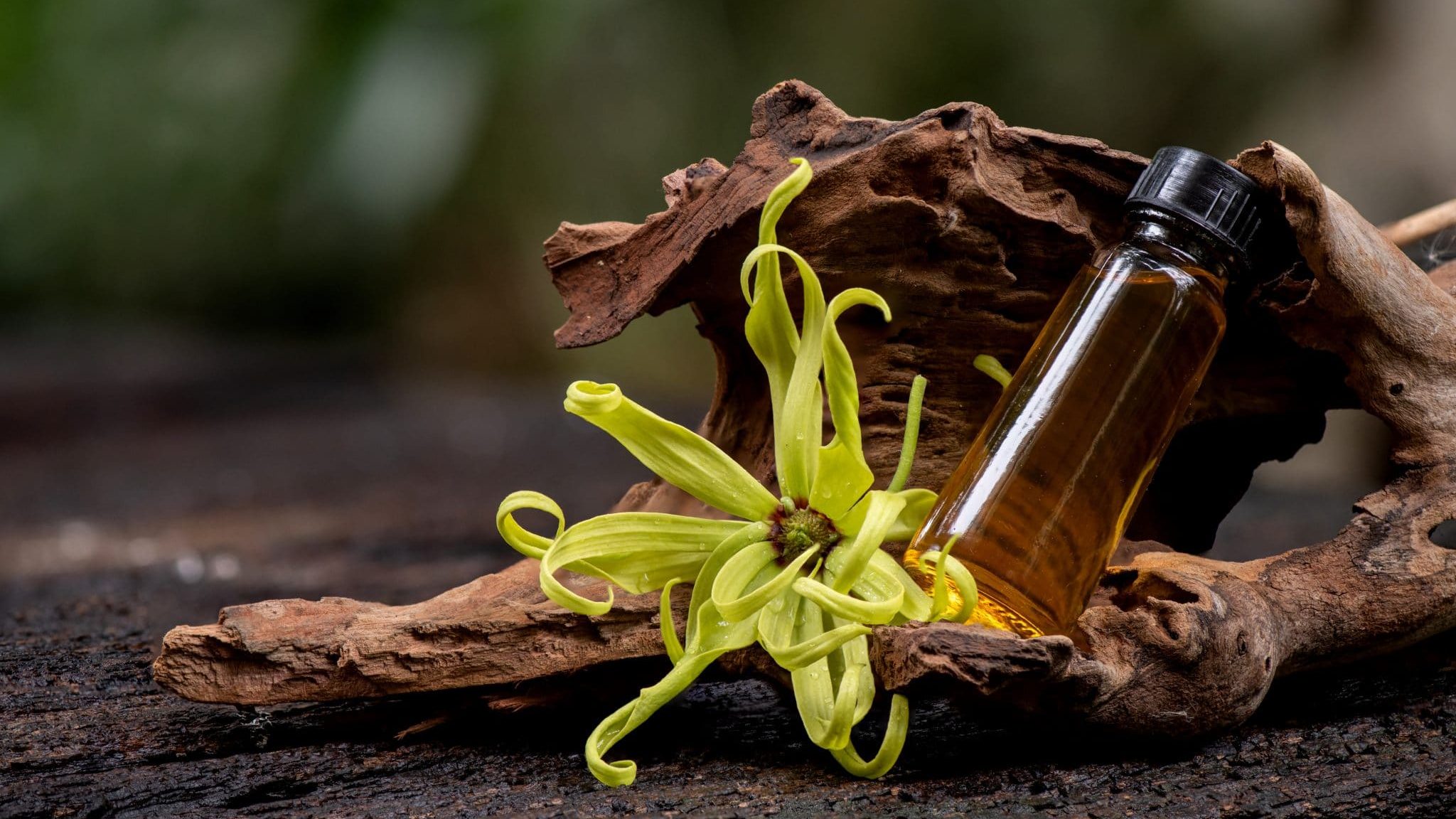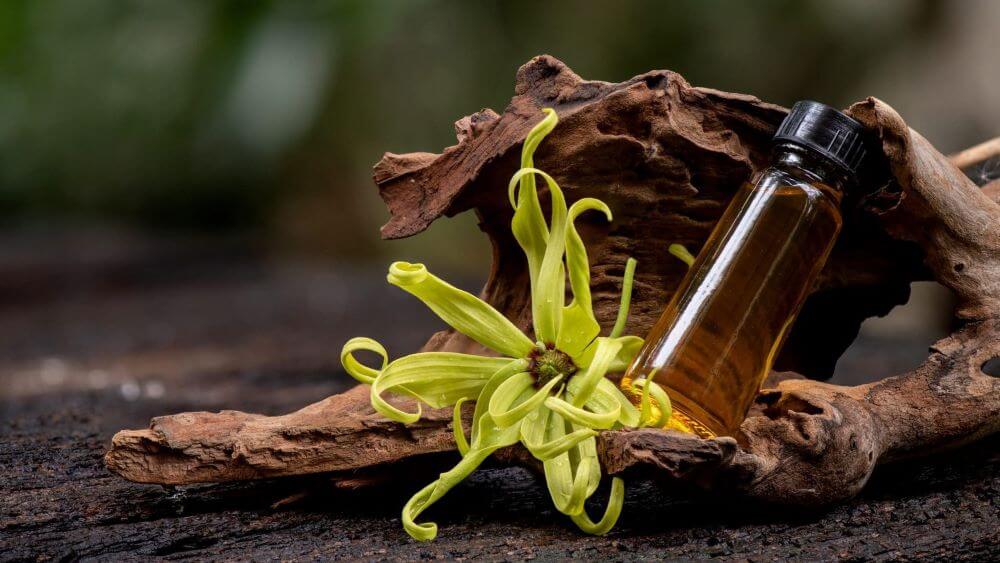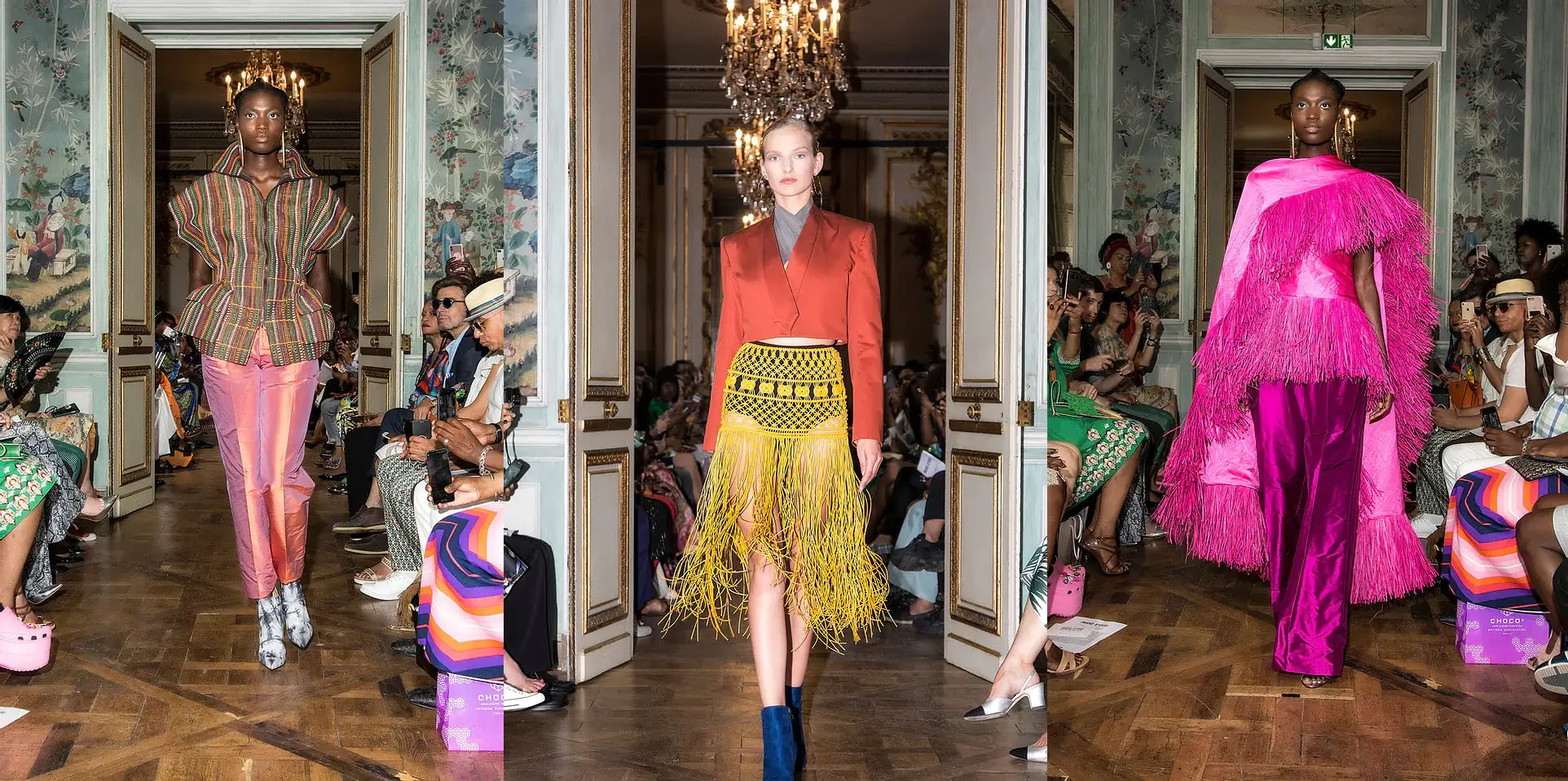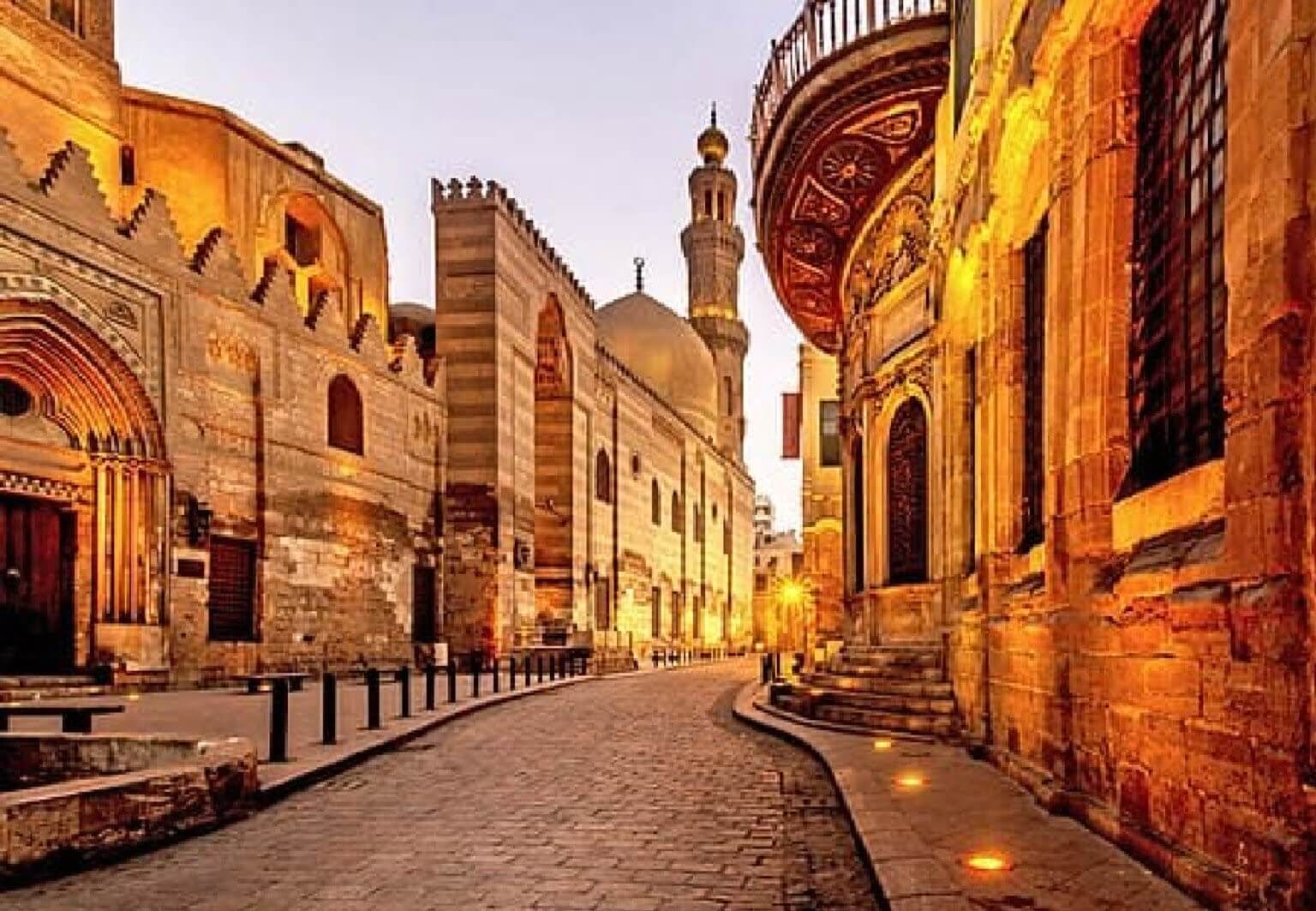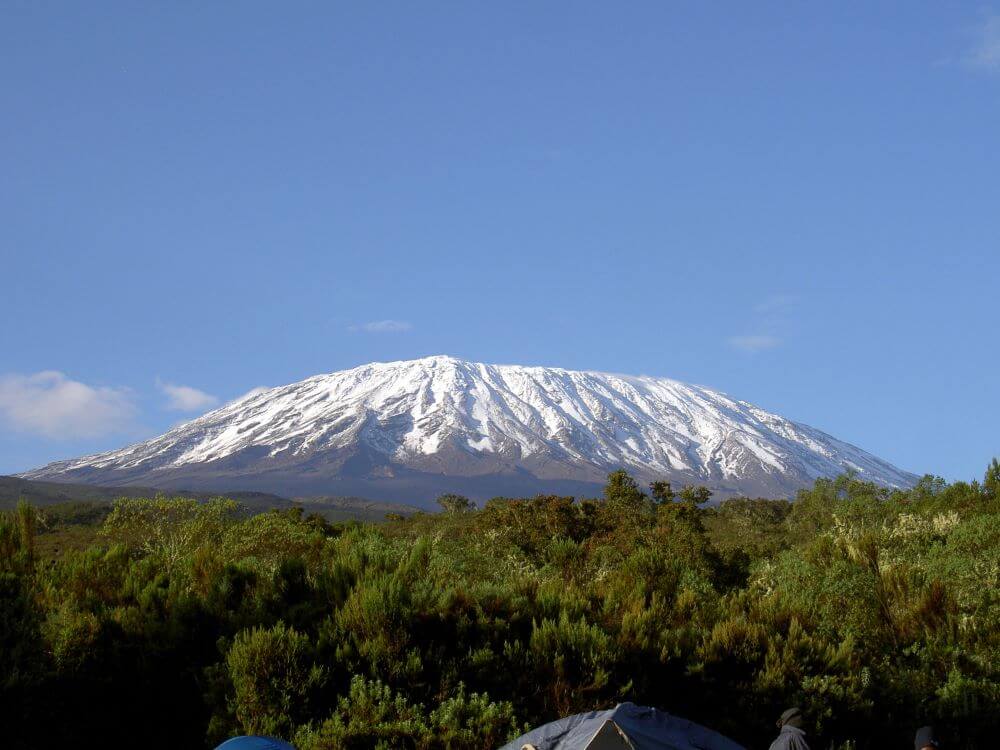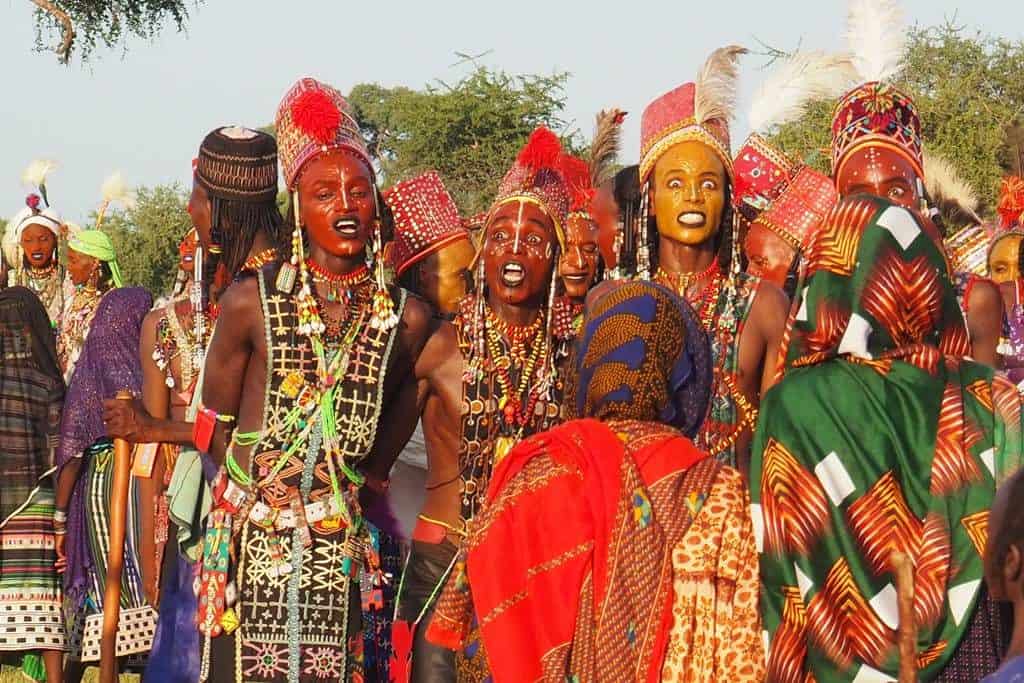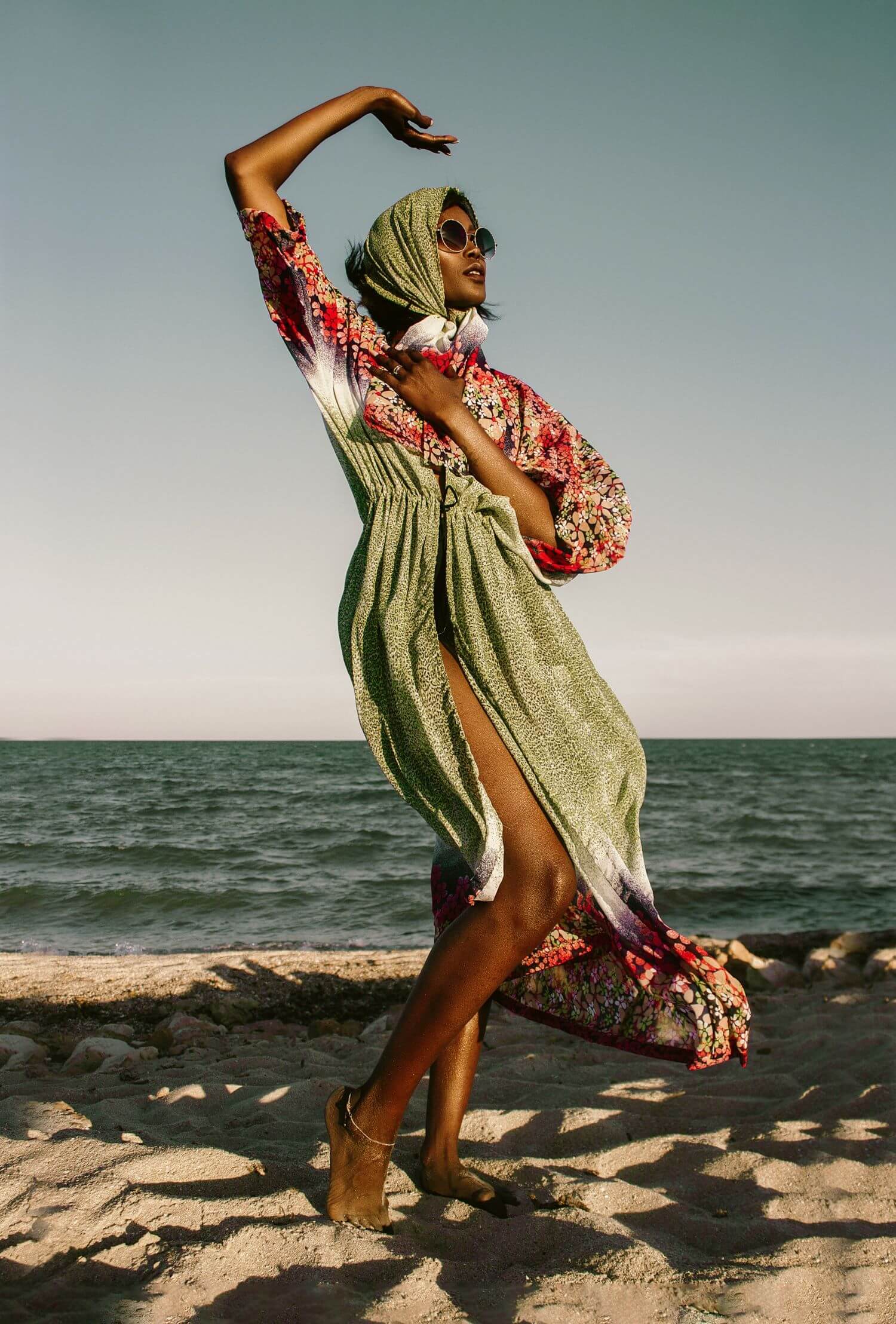Congo’s many ethnic groups and regions have developed a mosaic of traditional arts, including painting, sculpture, music, and dance. Kinshasai, the Democratic Republic of Congo (DRC) is a cosmopolitan city with pop culture, music, and fashion.
Several contemporary Congolese authors have received international acclaim, and the country boasts a collection and conservation of traditional oral literatures. Folklorists and ethnographers have produced significant anthologies of tales from the Mbuti Pygmies of the Ituri rainforest, proverbs from the Teke, tall tales from the Ngbaka, and other genres of traditional expression.
Music is by far the art form for which Congo is best known with Kinshasa widely regarded as one of the great music centers of the world,
There are museums and public libraries in most large cities, with national museums in Kananga, Mbandaka, and Lubumbashi. The capital city houses the national archives and the National Theatrical Troupe.
Yet, the DRC rivals the world’s best destinations with plethora of natural and scenic landscapes. Formerly Zaire known for holding one of the world’s largest deposits of diamonds, the country has a 25-mile coastline on the Atlantic Ocean, and is Africa’s largest country.
The DRC borders Central African Republic, South Sudan, Uganda, Rwanda, Burundi, Tanzania, Zambia; Angola, Atlantic coastline, the Angolan enclave of Cabinda, and Congo.
A brilliant nature-scape of valleys, high plateaus, three mountain ranges, and a low coastal plain including Lake Mai-Ndombe and Mobayi-Mbongo and Zongo mountains.
Water enthusiasts have Lakes Tumba, Mai-Ndombe, Lakes Albert, Edward, Kivu, Tanganyika, and Mweru.
The highest and most rugged are the striking chains of the Mitumba Mountains that stretch along the Western Rift Valley. Discover the snow-covered peaks of the Ruwenzori Range that lies between Lakes Albert and Edward astride the Ugandan border marking the country’s highest elevation at Margherita Peak. The volcanic Virunga Mountains is north of Lake Kivu.
Ubangi-Uele plateaus divide the Nile and Congo rivers moving to Lake Chad where you find Lulua and Lunda rivers and the Katanga (Shaba) plateaus of Kundelungu, Mitumba and Hakansson mountains. At Lukuga River is the Manika Plateau, the Kibara and the Bia mountains, and the high plains of Marungu.
The DRC also boasts the Angola Plateau, Mayumbe hill country and the Cristal Mountains where a narrow coastal plain separates it from the Atlantic Ocean.
Equatorial Rainforest blankets the DRC and is home to big game animals including elephants, bgiant wild boars, antelopes, lions, leopards, jackals, hyenas, cheetahs, wildcats, wild dogs, buffaloes, wild hogs, and black and white rhinoceroses and giraffes mainly inhabit the northeastern grasslands.
Hippopotamuses and crocodiles are common in the rivers and the lakes, and whales, dolphins, and lungfishes are found near the coast. A variety of fish, such as capitaine, catfish, electric fish, eels, cichlids, jellyfish make up the fish life.
Garamba, Virunga, Maiko, Kahuzi-Biega, Upemba, Salonga, and Kundelungu, are national parks with several recognized as UNESCO World Heritage sites.
With over 200 languages spoken, French is the official language.
Play
ART AND CULTURE
Congo’s art and culture is a mosiac of its many ethnic groups and found in painting, sculpture, music, and dance.
The southwest is known for the stone and nail-studded nkisi statues of the Kongo people and the masks and figurines of the Yaka. The Kuba, from the south-central region, are known for ndop, statues created in the likeness of the king that can serve as a symbolic representative in his absence. Luba art dominates the southeast region and reflects the strong influence of women in society through statuettes depicting motherhood. North of the Luba, the Lega produce masks and ivories. Zande and Mangbetu art are included in the northern region. Zande art is characterized by cult statuettes, spear or bow shafts, and anthropomorphic pottery, while Mangbetu art features figures with stylized elongated heads. Other folk traditions include making pottery, weaving raffia, and creating ceremonial dress.
Expressions from artists such as Ange Swane, Vithois Mwilambwe, Eddie Kamangwa, Hermès Maurice Mbikaya, and Dolet Malalu are defining the new modern DRC away from its colonial ties.
MUSEUMS
National Museum of DRC – Musée National de la République Démocratique du Congo
The new National Museum of DRC provides a clean space where Congo can exhibit its historical works of art in contrast with its modernist views of life, not only in the Congo, but a global village. A great improvement from its previous buildings, the new National Museum of DRC architecture is a modern interpretation of Congolese architecture that boasts four halls with exhibits (including one on traditional music instruments), and a cafe. The National Museum of DRC is a repository of the cultural history of DRC’s numerous ethnic groups and historical epochs of the Democratic Republic of the Congo in the capital Kinshasa.
Formerly called the Royal Museum for Central Africa or RMCA, there are a reported 45,000 items in the collection; however, they are not all exhibited as this is a growing exhibition.
The US$ 21 million modern museum uses solar energy for natural air circulation with only partial use of air conditioning. This real state-of-art exhibition of the Congolese history and culture is clearly exposed from the Pre-historic times until now.
The National Museum represents the largest cultural policy investment of South Korea in Central Africa so far.
The Museum opened to the public on November 23, 2019 with the President of the DR Congo, Félix Tshisekedi as its honored guest and speaker.
The Museum is worth the visit.
The National Museum of Lubumbashi (Musée national de Lubumbashi)
The Musée national de Lubumbashi or The National Museum of Lubumbashi is a museum of the Democratic Republic of Congo (DRC), located in Lubumbashi , in the south-east of the country. It is attached to the Institute of National Museums of Congo under the Ministry of Culture and Arts. Founded in 1958, the “Elizabethville Museum”, successively named ” Leopold II Museum ” (or “Cabu Museum”, in reference to its founder, Dr. Francis Cabu), from ” Katanga Regional Museum ” in the 1960s, before becoming the “National Museum of Lubumbashi” in 1970.
Formerly Leopold II Museum, the National Museum of Lubumbashi is now housed in a building designed by architect Claude Strebelle. It was created at the initiative of the Belgian professor Francis Cabu in 1946, who exhibited the results of his archaeological excavations. A rich ethnographic collection has been built over the years, as well as in entomology. The ensemble constitutes a rich heritage, and forms the permanent collection of the museum which also hosts temporary thematic exhibitions.
In 2000, the Musée national de Lubumbashi, which was falling into disuse due to lack of resources, benefited from major renovation works funded by the Rachel Forrest Foundation and Dialogues, which has since installed a gallery of ‘contemporary art. The Royal Museum of Central Africa in Brussels is also collaborating with the Lubumbashi Museum for the enhancement of this Katangan historical, artistic and cultural heritage.
Texaf Bilembo
Located in Kinshasa, Texaf Bilembo is an art museum, gallery and children’s museum where culture meets environment, sustainability, education and social life.
Texaf Bilembo is a mixing of Congolese history with contemporary art coupled with a lot of diverse activities. There are educational lessons on ecology for schools and a Sunday-brunch, but it is showcasing one local artist each month that makes this space unique.
All is for free and if you want a drink the prices are democratic.
There are many things happening at Texaf Bilembo. Yesterday, on Saturday 3rd meditation classes are offered for $10.
It is closed for the whole of August every year, so keep that in mind when planning.
Académie des Beaux-Arts (Academy of Fine Arts)
In Kinshasa, a great place for picture taking is Academie de Beaux-Art, a museum and gallery where visitors meet with the artists.
The Académie des Beaux Arts de Kinshasa is a higher art school with a park in which visitors can view forty original sculptures crafted by students and teachers, while exploring an exhibition hall with oil paintings and other artifacts.
Pieces on display can also be bought while also chatting with the artists at work. The lovely gardens feature a beautiful selection of works from Congolese artist. It is also great for anthropology lovers. With two exposition halls, you can visit the workshop and see sculptors at work.
FESTIVALS
The Festival Amani
The Festival Amani is an annual festival that takes place in the context of peace building in the Democratic Republic of Congo and the Great Lakes region. Amani is the Swahili word for Peace.
The Festival Amani is held annually in Goma, a town near the border between Rwanda and the Democratic Republic of Congo. The festival hosts music, dancers, comedy and talented artists in Goma. It lasts for 3 days in February of each year and celebrates that Congolese rumba was included in the UNESCO Intangible Cultural Heritage Lists.
In 2020, 36,000 people attended in defiance of an increase in violence in the area. The festival opened with a Congolese interpretation of Mozart’s Requiem. M’bilia Bel was one of the headlines whose performance included hits like Mpeve ya Longo and Yamba Nga.
The festival returned in 2022 after a year of absence due to the COVID-19 pandemic.
Music Festival
The Music Festival in the Congo Democratic Republic is a public event that’s celebrated every year on June 21st. It’s a part of the Make Music event that was first launched in France in 1982 and has now been held in over 120 countries around the world.
This holiday allows every single musician, despite their level of competency, their age, or their musical persuasion, to play their type of music at parks, plazas, and streets all over the country. And best of all, it’s completely open to the public and free, so everyone can enjoy the international language of music.
Many of the main events of this holiday take place in the capital of DR Congo, Kinshasa. This city is home to over 12-million people, and not only the native residents but people all over the Congo show up to observe this holiday. Of course, the Music Festival is also held in other smaller locations around the country, so just about everyone can enjoy this holiday.
BEACHES
Muanda Beach, Muanda
Muanda beach is located in Muanda. It is a beach, usually travelled by many young people but it’s not an issue if you want to go with your whole family. There are areas available for beach sports such as volleyball or soccer. It is close to the Hotel Le Beviour.
Plage du Peuple
Plage du Peuple is located in Goma, in the Kivu region of the Democratic Republic of the Congo. This small sandy beach is a favorite among families with small kids and a perfect place to spend a fun beach day. The water of Lake Kivu is calm and safe for kids to swim, and there is a playground for them to have fun. You can bring your own food and enjoy a picnic in the sand. Being so small, the beach can feel crowded during busy days, especially weekends.
WATERFALLS
Zongo Waterfall
Located 130 kilometers (4-hour journey from Kinshasa), Zongo Park provides a lovely setting and a spectacular scenery to the Zongo Waterfalls. The gorgeous 65m-high Zongo falls are one of DRC’s most spectacular sights. Getting to the viewpoints involves some hiking, but watching the water roaring over the precipice into the river below is unforgettable. What makes Zongo waterfalls unique is the water vapor that rises to the sky when the river water hits the ground.
You can drive or take the train to Kisantu. In Kisantu, there is a dirt road that goes to Zongo. It takes about one hour and a half to reach the first fall. Before reaching it, you will see an old dam and then Lodge.
The deep Congolese rainforest enables you to enjoy a jungle walk towards the water fall that enters into a lagoon beneath with shattering noise, echo serenade, and the legendary mythical “Eternal Rain”. Load your lungs and shout out “Zongo” in the magic falls which happens to repeat and extract your voice to higher scale in combination with the waterfall sound, a true wonder. The natural falls of Zongo is relative to the villagers of Matanda which are the landlords of this location.
Boyoma Falls
Boyoma falls: Formerly known as the Stanley falls, the Boyoma falls are a collection of 7 rapids – each measuring about 4.5 meters high along the Lualaba River. The Wagenya tribe live in areas around the falls and use ancient fishing methods (including baskets) which have been passed on from generation to generation. If you happen to travel between Ubundu and Kisangani, you will be left in awe at the sheer beauty of these falls. After visiting the falls, you can also visit the Wagenya tribe to learn more about their way of life and unique fishing methods. These methods are Top things to do in the Democratic Republic of Congotailored to work effectively in the fast flowing rapids and rocks.
Livingstone Waterfalls
The Livingstone waterfalls are a collection of large rapids found in the Congo river. The falls begin from Malebo pool all the way to Bas-Congo (Matadi). They are one of the top attractions in the Democratic Republic of Congo and worth visiting if you happen to be planning a safari in the country. The waterfalls are named after the famous British explorer known as David Livingstone.
MOUNTAINS
Ruwenzori Range
The Ruwenzori are a range of mountains between Uganda and the Democratic Republic of the Congo. The range’s upper regions are permanently snow-capped and glaciated. European explorers linked the Ruwenzori with the legendary Mountains of the Moon and the Greek scholar Ptolemy claimed it as the source of the Nile. Both the Virunga National Park and Rwenzori Mountains National Park in southwestern Uganda are located within the range.
The Rwenzori Mountains are steep, rugged and very wet. With many of the East African mountains of volcanic origin, the Rwenzori Mountains originated from the creation of the Albertine Rift. The Park forms part of the Virunga Park in DRC and on the other side towards Uganda, covers most of the center and eastern half of the range. The range includes Africa’s third, fourth and fifth highest peaks with plenty of landscape variations ranging from glaciers, snowfields, and lakes of spectacular beauty. The park is host to five unique vegetation zones, many rare, endemic, and endangered species, and the richest mountain flora in Africa – a very unusual cloud forest of huge heathers, groundsels and lobelias, draped in layers upon layers of slick mosses.
Virunga Mountains
Gorillas in the Mist, and the novel of the same name, document the work and death of primatologist Dian Fossey. The camp from which she operated, Karisoke Research Center, still exists in the Virunga Mountains.
Established as the first African national park in 1925, Virunga National Park is the continentʼs oldest protected area. Located in the Democratic Republic of Congoʼs (DRC) eastern provinces, its outstanding biodiversity makes it a UNESCO World Heritage Site. The Virunga Mountains are a chain of eight major volcanoes with most dormant except Mount Nyiragongo and Mount Nyamuragira with eruptions n 2006, 2010 and May 2021. Mount Karisimbi is the highest volcano and Mount Sabyinyo, the oldest.
The Virunga National Park is part of the Congo Basin, the second-largest rainforest after the Amazon. It supports endangered species, valuable biodiversity and the wellbeing of more than 50,000 people. The Virunga Mountains are home of the critically endangered mountain gorilla, listed on the IUCN Red List of Endangered Species.
The Karisoke Research Center, founded by Dian Fossey to observe gorillas in their native habitat, is located between Mount Karisimbi and Mount Bisoke.
Mount Nyamuragira
Mount Nyamuragira is also an active volcano found within the Virunga National Park. Along with Nyiragongo, they are the most active volcanoes in the world. It also has a permanent lava lake on the summit. Although most tourists prefer hiking mount Nyiragongo, Nyamuragira is also fascinating and an amazing natural wonder. It is one mountain you must climb especially if you have already Tourist attractions in the Democratic Republic of Congo conquered Nyiragongo.
LAKES AND RIVERS
Lake Albert
Lake Albert, Africa’s seventh-largest lake, is located in the center of the African continent between Uganda and the Democratic Republic of the Congo.
Lake Albert main sources are the White Nile, ultimately coming from Lake Victoria and the Semliki River, which issues from Lake Edward.
Lake Albert is home to the river hippopotamus, Ugandan kob, Nile lechwe, Nile crocodile, Nile monitor lizard, African softshell turtle, Central African mud turtle, and Williams’ mud turtle. There are 55 fish species.
In 1864, the explorers Samuel Baker and Flóra von Sass found the lake and renamed it after the recently deceased Prince Albert, consort of Queen Victoria. In the 20th century, Zairian President Mobutu Sese Seko temporarily named the lake after himself.
Heritage Oil and Tullow Oil have announced major oil finds in the Lake Albert basin, with estimates that the multi-billion barrel field will prove to be the largest onshore field found in sub-Saharan Africa for more than twenty years.
Lake Kivu
Lake kivu is one of the great lakes of Africa beautifully surrounded by mountains. With crystal clear waters, explore the Virunga or the volcano while there. Though be careful, because of active volcanoes still in some parts.
No swimming is allowed; however, it is an amazing place to sit on the shore, relax and enjoy a beer or a glass of wine.
The massive Lake Kivu has an expanse of almost 45 kilometer and looks like a sea. There are number of resorts both on the banks of offering excellent multi cuisine options. A must visit for all.
Lake Tanganyika
Lake Tanganyika (/ˌtæŋɡənˈjiːkə, -ɡæn-/)[4] is an African Great Lake.[5] It is the second-oldest freshwater lake in the world, the second-largest by volume, and the second-deepest, in all cases after Lake Baikal in Siberia.[6][7] It is the world’s longest freshwater lake.[6] The lake is shared among four countries—Tanzania, the Democratic Republic of the Congo (DRC), Burundi, and Zambia, with Tanzania (46%) and DRC (40%) possessing the majority of the lake. It drains into the Congo River system and ultimately into the Atlantic Ocean.
The Lake is home to several beautiful islands in the DRC, with the most notables being Kavala Island, Mamba-Kayenda Islands, Milima Island and Kibishie Island.
Lake Tanganyika is home to Nile crocodiles including famous giant Gustave, and Storm’s water cobra, a threatened subspecies of banded water cobra only found in Lake Tanganyika.
The first known Westerners to find the lake were the British explorers Richard Burton and John Speke, in 1858.
In 1992 Lake Tanganyika was featured in the British TV documentary series Pole to Pole. The BBC documentarian Michael Palin stayed on board the MV Liemba and travelled across the lake.
Lake Mweru
Lake Mweru is a natural freshwater lake, part of the rift valley lakes, located between Zambia and the Democratic Republic of Congo. It is the second largest lake in the Congo valley (after the world-renowned Tanganyika), situated on the longest arm of the Congo River. The lake is especially inviting for adventurous souls searching for off-the-beaten-path destinations during their travels. The area shows what tropical Africa could be, if left to itself, having a dynamic population, rich in culture and colorful in nature.
River Nile
The Nile which flows into the Mediterranean Sea is the longest river in Africa and has historically been considered the longest river in the world. Its drains into eleven countries: the Democratic Republic of the Congo, Tanzania, Burundi, Rwanda, Uganda, Kenya, Ethiopia, Eritrea, South Sudan, Republic of the Sudan, and Egypt.
The Nile has two major tributaries – the White Nile and the Blue Nile.
The Nile has been the lifeline of civilization in Egypt since the Stone Age, with most of the population and all of the cities of Egypt developing along those parts of the Nile valley lying north of Aswan.
Some of the rich history of the Nile is also described in the Bible. It was, for example, in the delta region that the Israelites settled when they first entered Egypt (as described in Genesis), and it was from that area that the Exodus occurred. It was into the Nile River that the infant Moses was placed in a basket by his sister Miriam, and where he was found by the Pharaoh’s daughter.
The Congo-Nile Divide (or Nile Congo Watershed) is the continental divide that separates the drainage basins of the Nile and Congo rivers. It is about 2,000 kilometres (1,200 mi) long.
Congo River
The Congo River: After the Amazon, the Congo river is the second most extensive river system in the world. It is the deepest river in the world with an overall volume that is second only to the amazon. Water from the river helps contribute to the remarkable scenery and biodiversity in much of the countryside. The river is home to over 713 species of fish, crocodiles, hippos, birds and waterfalls. Talking about waterfalls, the Congo river is capable of supplying all the hydro-electric power needed in Africa. Over 40 power plants have been built along the river.
Lukaya River
This is one of the most prominent water bodies in the Democratic Republic of Congo. It gets its waters from the Crystal Mountains and then flows to the east through Bas-Congo before releasing its waters into the Ndjili River. Several important tourist attractions can be found along the river path including the Lola Ya Bonobo Sanctuary, waterfalls, beaches and even a lake formed by the river at a certain valley. The best way to experience this amazing water body is to take a train from Kinshasa to Matadi or vice versa. The rail line runs along the river valley for while in two sections.Lake Chad
ISLANDS
Idjwi Island
Floating out in the middle of Lake Kivu, Idjwi Island is, at 340 sq km, the second-largest lake island in Africa. Isolated from the Congo, Idjwi is a wonderful place to escape the modern world, enjoy nature and the rich island culture. Lodging is available in small guesthouses and the speedboat between Bukavu and Goma stops here on request.
Escape the modern world and explore in nature the island’s rich culture. Board a speed boat from Goma and Bukavu towns to the island where there are accommodations and camping site.
Tourist can visit plantations where there are fresh fruits as pineapple, go one on one with the locals, bird watch, hang out with local fishermen or swim the beautiful Lake Kivu.
NATIONAL PARKS AND WORLD HERITAGE SITES
Valle de la Lufira
Valle de la Lufira: Valle de la Lufira is a UNESCO Biosphere Reserve found in Lubumbashi. It is a collection of the best of the country’s flora and fauna. Both local and international tourists go to the reserve for nature walks, relaxation, picnics, bird watching and other activities. If you happen to be visiting Lubumbashi but don’t have the time to visit the nearby national parks, this is the place to go to. You will be left in awe by the beautiful scenery, trees, plants, butterflies, moths, birds and primates.
Garamba
Garamba, one of Africa’s oldest national parks and a World Heritage Site, is the last stronghold for the largest population of elephants and the last remaining Kordofan giraffe in the DRC
Garamba National Park spans 5,133 km2 and is situated in the north-eastern Democratic Republic of Congo (DRC) bordering South Sudan. It is one of Africa’s oldest national parks, designated in 1938, and in 1980 was declared a World Heritage Site.
There are nearly than 1,200 elephants and the population of critically endangered Kordofan giraffe, which is the last remaining in the DRC, continues to grow with over 70 individuals now recorded.
Tens of thousands of people living around the park have benefitted from the safety and stability the park has provided and, in addition, are supported through the provision of schools, healthcare, and investments in sustainable development and enterprise.
In a region with little economic opportunity, Garamba employs over 500 full-time local staff. Our growing ranger force provides security not only to wildlife but also to tens of thousands of people living around the park.
Virunga
Virunga National Park is Africa’s most biodiverse protected area, home to over one thousand species of mammal, bird, reptile, and amphibian as well as 1/3 of the world’s endangered mountain gorillas. Located on the eastern edge of the Congo Basin, the world’s second-largest tropical rainforest, Virunga has become known as the park of fire and ice for its diverse habitats ranging from the Rwenzori peaks to savanna and volcanic plains. Virunga is an UNESCO world heritage site.
Virunga National Park is the only protected area on Earth home to three taxa of great ape: the mountain gorilla, eastern lowland gorilla and eastern chimpanzee. It is home to over 200 mammals including forest and savanna elephants, hippos, okapis, lions, and mountain gorillas. Rangers conservation efforts were rewarded last year by the return of large elephant herds to the Park. The common hippo, also in Virunga, is one of Africa’s largest and most dangerous land animals.
Virunga National Park’s headquarters at Rumangabo is home to the Senkwekwe Centre, the world’s only facility for orphaned mountain gorillas. With expert staff who provide daily care for the orphans, who were each separated from their family due to the impact of poaching, the Senkwekwe Centre is a unique sanctuary offering the gorillas the chance to lead happy and secure lives in their forested enclosure.
Maiko National Park
The MNP was created in November 1970, and covers an area of 10,830 km² within three provinces: Orientale, Maniema and North-Kivu. The park was gazetted primarily to protect a block of swamp forest.
MNP contains habitats for several key endemic species such as the eastern lowland (Grauer’s) gorilla, the okapi, the forest elephant and the Congo peacock. It is also an important watershed and plays an essential role in the sequestration of carbon.
In terms of biodiversity, MNP ranks second in species richness among the 8 biodiversity reserves in the Congo.Kahuzi-Biega
Upemba
Upemba National Park is one of the oldest national parks of the Democratic Republic of Congo. It was first established in May 1939 on the basis of a Belgian royal decree with an area of 1.75 millions hectares because of its high value in biodiversity. It is home to some 1.800 different species, including lions, leopards, elephants, buffalo, and the Katanga impala which is endemic to the park. Upemba is the only national park in DRC with zebra and cheetah populations. The habitat of the park varies from grassland at higher altitudes, through forests, woodlands, to lakes and wetlands at lowest altitudes. Since 1993, its valley of the Lufira, from the fall of Kyubo to the junction with the Congo river at Kitembo, has been designated a UNESCO Biodiversity Reserve due to its a large concentration of mammals, reptiles, batrachians, birds, fish and a vast wetland.Salonga.
In February 2017 the Forgotten Parks Foundation signed a public, private partnership agreement with the Congolese government to rehabilitate and manage the Upemba national park under the Upemba & Kundelungu national park complex.
Kundelungu
Kundelugu National Park a tourist jewel of the DRC located in Haut-Katanga province. The magnificent park is situated 180 kilometers north east of Lubumbashi plateau which it derives its name from. Kundelungu National Park covers an area of 76,000 square kilometers and is situated in the same province and adjacent to the upemba Natinal Park.
Kundelungu national park is a IUNCN category II Park made up of fascinating landscape idea for safar activities like nature walks and hiking.
The Park consists of the stunning magnificent Lofoi falls. Lofoi falls are the highest waterfalls in Africa jetting at 384 meters in a single jet. There are other majestic waterfalls as Masansa and Lutshipuka, with swimming possible at Lutshipuka.
Kundelungu is a shelter for various wildlife such as antelopes, Jackals, Porcupines, warthogs, snakes, monkeys, buffalos, Hippopotamuses, lions, cheetahs, leopards, Zebras, crocodiles and many more. It is also home to a variety of birds species such as cranes, egrets, marabouts and pelicans. The parks harbors big cat like lions as well.
Eat
Food habits are often linked to the region of origin and in the DRC fish is a staple for those living on the rivers with meaty dishes for Congolese in the tropical savannah regions, while those living in wooden topical areas primarily eat vegetarian food. The best description of the Congolese gastronomy would be a fusion of its history of Western invasion juxtaposed into a rich cultural heritage of fishermen, farmers, and women that love to cook.
It would not be possible to describe all the gastronomical diversity of the DRCThe Congolese cuisine has influences of French techniques (confit and braising of meat, for instance) and Belgian cooking but is solidly based in Central and Western African cuisine. commonly cultivated crops are cassava, sweet potatoes, taro, yam, plantains, okra, tomatoes, beans, and ground nuts. The cuisine of the Democratic Republic of the Congo and the Republic of the Congo varies widely, representing the food of indigenous people. Cassava, fufu, rice, plantain and potatoes are generally the staple foods eaten with other side dishes.Chicken and goat meat are the main source of animal protein, but given that they cost more, are often reserved for special occasions or to share with guests. Fish from the Congo are fried or steamed in banana leaves.
The DRC is an international oasis of dining options from French, Italian, Lebanese, Chinese, Indian, Portuguese to the local restaurants and pubs. The influences of a checkered history of colonialism against the West African backdrop has created a menu of options to please even the most discriminating foodie.
Limoncello
No worries restaurant. I had some salad and a local beer. The staff was nice enough. Prices a little bit high,but it’s a Kinshasa thing.
This is a Kinshasa restaurant classic and I come every time I am in DRC. The Italian flavours will not disappoint and they cater to vegans and vegetarians as well. The outdoor garden is perfect if you want to seat outside for an evening meal.
We were in DRC for 10 days for business and it made such a nice change from hotel food.
Italian food at its best, from pizza to Osso bucco … any line on the menu is best choice. Wine is excellent. Prices are reasonable. Our preferred restaurant in Kinshasa
Awesome Lunch Venue, once you are inside it’s so peaceful from the Kinshasa bustling Kinshasa streets right outside.
Probably the best service and food in kinshasa when it comes to Italian food .. I highly recommend this place to anyone visiting kinshasa
Limoncello is a hidden gem in the heart of Kinshasa. It is the best restaurant in the Democratic Republic of the Congo. The staff and service were wonderful and the food was 5 Star quality.
Avenue Tombalbaye 20 – Gombe, Kinshasa Democratic Republic of the Congo+243 815 141 111
O Poeta
I often order from O’poeta Gombe as they usually have delicious pizzas and the delivery is relatively fast. However, this time, the service lacked a little. Although the delivery took longer than usual (over an hour), the highlight of this order was the lack of…More
the pizza are the best i lived in many countries but the o poeta pizza are among my top 5 pizza place in the world. i will just recommand that the use fresher ingredient as the mushroom used are from cane this will make the…More
The pizza was great (as per usual) but I thought I’d be adventurous and order garlic butter shrimp appetizer. When we requested bread (as it is no longer served to individual tables they brought us some to choose from a communal basket to pick with…More
Talking about pizza in kinshasa means O’poeta Great.This Is the first place to recommend when visiting kinshasa
The restaurant is set in business district of Gombe in Kinshasa so very accessible if you are in the area. Pizza and chicken were very good at affordable prices for Kinshasa. Waiters were attentive however english was not fluent
Avenue du Cercle, n° 4, Kinshasa Democratic Republic of the Congo+243 999 229 097
Firengui Resto-Bar
Perfect ambience and great hospitality would recommend to visit once and feel ambiance. The food was delectable and the staff was very decent.
We ordered a full dinner from here, including a number of Indian dishes. The food arrived on time and was delicious. We would happily order from them again.
This is very cool idea for the buffet system. I am grateful for the see in restaurant for ferangi it’s me good for in Kinshasa for the Indian people I never see like this hotel.
I love it service and good teast biryani and gulaab jamoon,,,, love it firangi restaurant at kinshasa DRC
Very nice service and food also exlenent teast I love firangi restaurant,,, last week waited love this
I ate there Indian rice and chiken. The service was very fast and super good, I love lt. I was with my friend and they also loved
Very good taste and service is better, home delivery also nice , I’m really happy to got this restaurant in Kinshasa..
Authentic Indian food, awesome service, nice ambiance, friendly staff, …. a place worth to visit…..
This is the restaurant where to come when in kinshasa. Not only for sunday brunch but for everyday lunch or dinner. They really take care of you.
Amazing food cooked by the chef Shakti. He does veg amd non-veg with minute details to the flavour amd teste. The Sunday buffet includes plenty of mouth watering varieties. Suggest to talk to the chef and explain him your taste preference. A must visit place…More
Very Nice Lunch ,Enjoyed a Lot with Family . Nice Hospitality . Quinoa Salad, Fish Cilantro is best Items we had.
When I first came to Kinshasa, I was a bit skeptical on some of the restaurants here until I ate at Firengui. Great food along with great service and a very relaxing atmosphere that’s great for any occasion. Coming to Firengui, or even ordering it…More
Very very good ………..staff is very gentle,very good service food is outstanding with pleasent environment best restaurant in Kinshasa
34, Colonel Ebeya Gombe, Kinshasa Democratic Republic of the Congo+243 818 554 749
ASK Tabuinhas
ItalianFrenchInternational
Every Sunday they have a splendid buffet,start 13h .i visit with my family and it was very good. The place is located in ma campagne it’s perfect place for spend the weekend and offcorse taste the Sunday buffet . highly recommended.
Great buffet! I went to the Sunday buffet which starts at 13h. We were a bit earlier since I had read here that the food can finish soon. Exactly at 13h the buffet was open and the food choice is amazing. You can find anything from sushi, to foie gras, spring rolls, pizza and even bacalhau (exactly what I was looking for). Make as many rounds as you want for the 35usd but take care not to leave good on your plate… there’s no point to waste food when others can eat.
The deserts choices are also diverse and as delicious as the main plates.
Great ambience and food. Perfect spot for a Sunday brunch with good send variegated quality food, from lasagne to sushi. Better arrive quite early, as plates on the buffet get easily empty around 14.30, go early to make the best out of it!
Very good Sunday buffet. The best buffet in Kinshasa,they have everything Portuguese,and international food.They also have a swimming pool and a basket field.thte location is in ma campaigne.top place
Decent Sunday buffet. If you are a fan of buffets in general then this is a decent place. It is in the middle of ASK club with basketball courts and pool. The restaurant itself is very simple, quality of food varies, and u need to there early to ensure availability of the different dishes.
Avenue de La Paix, Kinshasa Democratic Republic of the Congo+243 819 976 959
Patisserie Nouvelle
BakeriesFrenchEuropean
A great spot for coffee or lunch, the Patisserie Nouvelle in Kinshasa offers tranquility and a relaxing environment away from the chaos of the city. Considered one of the best bakeries in Kinshasa, the café serves up excellent pastries and coffee in a friendly, clean and well managed environment.
The Belgian owned restaurant uses natural ingredients coupled with great service and a menu that offers diners a variety of sandwiches and sweets to choose.
Don’t forget to grab some ice cream…it is highly recommended!
343 Avenue de l’Equateur Gombe, Kinshasa Democratic Republic of the Congo+243 819 989 000
Mon Béguin
Awesome place with a lovely view of the city of Kinshasa. Amazing staff and delicious food. Not many food options, but ok if you want to go for a drink at sunset. Book in advance for the VIP area overlooking the river. Amazing drink selection. And very beautiful view of the 2 capital. Cozy place for a good meal. Love itNice place with good ambiance!
views of the Congo river.
Chic and very well decorated restaurant. We had the fried avocado starter and the truffle tagliatelle. I only drank a cocktail and ate tapas there, The service was top notch, the meats (lamb chops/beef) were well marinated and tender. I also recommend the sweet potato dumplings
60 Ave Uvira, Kinshasa, Congo – Kinshasa
Opens 12PM Sun
+243 820 000 855
A Casa Mia Kinshasa
Nice ambiance for both outdoor and indoor seating. Pizza was delicious.
Once you get through the hustle and bustle outside, you’ll know you’ve stepped into an oasis.The vibe was sophisticated and welcoming. Like everything else in this vibrant city, the food was overpriced. By far the best pizza in Kinshasa! The staff is polite, the service is fast and the place is very cozy. I’ll be back. Delicious food, generous portions, very knowledgeable wine suggestions and perfect service! Very good intalian food in Kinshasa. They have a large variety of pizza and seating both indoors and outdoors. Best Italian restaurant in Kinshasa. Nice place clean if it’s not raining try to have your dinner out, as I like open area and fish air. If you like original Italian cuisine, it’s your place. Cosy outdoor pool restaurant area and service is friendly. Pizzas are good. My favourite fine dining, I feel that the atmosphere is among the best of any restaurant I’ve been to in the region, while the food is top notch. Be sure to sit on the inside with the interior tree. One of the pizzas there was both the most expensive pizza of my life, as well as the most delicious and worth every dollar. Great to share.
70b Avenue Uvira, Kinshasa.
+ 243 84 0355.657/ + 243 89 3089.662
Ideally located on the top floor of the hotel,
The restaurant, bar and terrace offer creative cuisine,
Combining tradition and originality
Place for reunions and meetings, seasonal menus, warm, intimate or festive atmosphere: the d’vins opens its doors to you, and invites you to relax and enjoy conviviality.
Its roof terrace is bright and panoramic, it will immerse you in an authentic atmosphere.
Event space and cigar bar.
Discreet and confidential, this place will offer you the privilege of being “outside” at any time of the year.
Restaurant d’Vins
f Bella Riva HotelCroisement des Avenue de La Mission et Kalemie #Ref en diagonale du cassier Judiciaire de la Gombe., Kinshasa Democratic Republic of the Congo+243 844 427 118+ Add website
Open now: 12:00 PM – 10:30 PM
Mediterranean, European
This is a top Kinshasa restaurant. The food is truly excellent and is complimented by a very good wine list. The ambiance is authentic and relaxed. The staff are friendly and helpful. Prices are not cheap but are good for the quality of food.
The salmon was just wow!
Great Tex-Mex, Pizzas, Pastas and Meats set in a quaint outdoor – poolside breezy ambiance. caters to all types of diners
Portuguese restaurant with a view in Kinshasa.
The house offers good selection of French, Italian, Spanish…More
a bacalhau fish and my girlfriend a filet pur (beef).
Portugese owners have an excellent restaurant.
terrace you will have a view on Brazzaville’s bridge and … the moon! Great for dates but also for dinner with friends! I first visited Restaurant d’Vins for an evening meal and was very pleasantly surprised. When I cut in to my meal, the food was so moist and tender. It was even more delicious to taste. I really enjoyed being out on the balcony and being
Le Cercle Gourmand
Also called the Circle of Kinshasa or the Gardens of the Circle. Beautiful setting, within the golf club. The building includes several spaces: the restaurant, the terrace, various small lounges and a conference room. Different menus and prices: more relaxed (terrace) or more elaborate and therefore more expensive (restaurant). French cuisine essentially. Very popular Sunday family get-together and occasional thematic buffets: Thai, Moroccan, Lebanese… Golf and tennis on site, by subscription. A reference.
414, avenue du Cercle, Réf : le Golf. Kinshasa
+243 81 71 55 252
E Mandarin
Thirty years of presence at Kin and the Mandarin still dominates, both literally and figuratively, the other Asian restaurants: decor, service, variety, quality… With the panorama as a bonus. Lunch menu at noon, table of teppanyaki-oriental grill from Tuesday to Sunday, Chinese fondue, Chinese buffet, full bar and a menu that offers a hundred dishes. Private banquet room for parties or business dinners available. Outdoor setting bof but good parking. With, as a welcoming committee, police officers who will show you the way by trying to win a small ticket.
Gombe, Boulevard du 30 Juin, Au 7e étage du bâtiment de l’INSS Kinshasa
+243 81 88 41 716
Restaurant Chez Gaby
Restaurant Portugais a kinshasa,plusieurs spécialistes Portugaises e françaises.Ambiance familiale.
A Portuguese restaurant in Kinshasa that specializes in Portuguese and French cuisine perfect for families. The menu carries delectable Brazilian, French and vegetarian dishes. Great coffees and drinks are served for lunch and dinner. The restaurant services include catering, groups, and kids. Dine indoor or outdoor.
Avenue Mongala, Kinshasa, 00243, Democratic Republic of the Congo
+243819904213
www.chezgabykinshasa.com
Le Palais
Good place for enjoyments with varieties of fast foods, drinks, juices, cocktails, and desserts. Very nice bar, DJ area with great sitting and dance stage running by Virtual DJ.. nice ambience, open and indoor seating are available. Smoking and hookah are available.
The menu features dishes from specialties as the filet de capitaine, pizza, zaatar, shawarmas, burgers, suchsi to drinking champagne. Dine-in, takeout, or delivery.
Belle vue, 7 O.U.A, Kinshasa, Congo – Kinshasa
Opens 9AM
+243 973 999 999
Léon Hôtel
The menu is tempting for lunch and dinner, but the real star meal at Hotel Léon is the buffet breakfast. It is gargantuan and offers a diversity and freshness unmatched in the capital. The hot and cold dishes are locally and European inspired. There are also good vegetables and a variety of seasonal fruits, cold meats, dairy products and all kinds of breads and pastries. For lunch and dinner, you can eat à la carte. In the evening, the small bar is perfect for a last beer.
41, Avenue Luambo Makiadi, Perpendiculaire au Bd du 30 juin, en face de l’Onatra Kinshasa –
+243 99 38 47 711
A Casa Mia
Chic and sober decoration for this champion of Italian gastronomy with three spaces to choose from: the terrace, the dining room and the pergola. Antipasti, carpaccio, pizzas, pastas, risotto, escalope, osso buco and other family specialties from the south of the peninsula, plus the original creations of Eric, the Italian-Congolese owner. All at reasonable prices. Don’t forget to check out the fine Italian wines. Theme nights, happy hour and cocktail bar around the small pool. As they say here, mangia che te fa bene!
70B, avenue Uvira Kinshasa
+243 84 03 55 657
Le Roi Du Cossa
Absolute reign in terms of cossas (local gambas) across the city. Long lasting for the couple Ramos! It is accompanied by these royal cossas plateaus served by plancha and fries in garlic, pili-pili or whisky. Count $ 30 for a tray and it’s worth it. Other Portuguese-inspired dishes are available on the map. The garden doesn’t break three legs to a duck but we don’t care about it once it’s served… Also to take away.
220, avenue Mpolo Maurice, Derrière l’immeuble Sabena Kinshasa
+243 81 50 96 315
Tucanos
At the base, it is Brazilian, but apart from the famous Rodízio (grill), it leaves a little in all directions… No matter how successful and quality is always at the meeting, for the pleasure of carnivores and great eaters. Despite huge prices, they also (formula to will at $ 65-85). With more accessible things, and non-meat, à la carte. ” International “buffet on Sundays. Mention for the frame and terrace, at the foot of an emblematic building in Kinshasa.
Immeuble Sozacom, Boulevard du 30 Juin Kinshasa
+243 84 13 61 360
Flore
Classic Nganda in appearance with plastic furniture, music and TV. One feels quickly at home. The place, clean and friendly, is certainly a good address in Congolese gastronomy! Explanations are necessary to decipher the menu, between Koba (turtle), Nzombo (fish), Liboke (meat stew), Ntaba (goat), Ngando (Crocodile), Mboloko (Antelope), Pondu (cassava leaf)… Various local drinks accompany the dishes served hot. Arrive early, the time to be served, and if not the others will have eaten everything!
Barumbu, 406A, avenue du Progrès Kinshasa –
+243 89 40 23 625
La Fleur De Sel
A classical relative to Kin in which there are two spaces, as often: the terrace and the room with a card and different rates (+/high). The whole is fairly high. French-Belgian cuisine with Italian specialities and a few incursions in the world. Oysters and mussels every Friday. Ideal lunch for a business lunch or evening for dinner in lovers, preferably on the terrace to enjoy the intimate and intimate surroundings on the small swimming pool (reserve where applicable). Musical animation some nights. Only hic: The room was very clean.
Gombe, 40/42, Boulevard du 30 juin, Entre l’alimentation Regal et l’immeuble des Nations Unies Kinshasa
+243 81 700 50 36
Green Garden
Considered by some as the best Indian, and definitely less expensive than the Spice or Fusion… De facto, it does not break hut in appearance: A few barns, tables and chairs in a garden, and a pretty cold room. But the atmosphere is relaxed, in the shade of palm trees and mango trees, and the dishes are up to the height. A few choices, including vegetarian options, some Chinese dishes and even some Congolese basics in addition to a snack card.
Avenue du Colonel Ebeya Kinshasa
+243 99 27 51 292
Rocas
Tapas bar held by a Spanish expat, which seems to delight the Kinois who find themselves there on the weekend with great renfort and cocktails (tonic gin!). With live concerts and thematic evenings. Nice frame with a semi-covered terrace inside an enclosure. Hot and cold tapas such as calamares, patas bravas, croquetas, tortillas, etc., as well as a few dishes including valenciana paella. A little chérot given the portions. Language courses and retransmission of football matches
1022, avenue des Forces Armées, Galerie Gombe River. En face de la Halle de la Gombe. Kinshasa –
+243 82 48 50 760
Sir Harry’s
Located on the 6 th floor of a modern building offering a beautiful panorama on the river. Well decorated decor, light games, small pond… Which doesn’t stop some of the taste (hawkmoth!). Both dining and lounge bar, in open area. Varied menu with Indian predominance given the origins of the boss. Buffet from noon to $ 20. Snacks and appetizers for the lounge. Karaoke on Sunday, and feast on weekends! Good option, which seems to be maintained over time.
Gombe/Barumbu, 8225, Avenue Kabasele (ex Flambeau), Vers Bon Marché. Kinshasa
+243 89 00 12 255
La Chaumiere
Nice longevity for this Chaumière. Nothing very funky, but a classic formula that works and stands the test of time, in a green setting in the heart of the business district. Various straw huts: from the most relaxed to the most “chic” for the personalities who come to refresh themselves and eat out of sight. Non-stop Congolese buffet offering a wide variety of dishes, and barbecue with traditional chicken and goat kebabs. Retro music atmosphere on weekends. Ideal place to discover the Congolese gastronomy..
3469, avenue Ngongo Lutete, En face de l’ambassade sud-africaine Kinshasa
+243 99 99 33 721
Charly’s Chicken Soso
A new sign enriches the already quite gourmet array of kinois restaurants. Located on Triumphant Boulevard, between the Martyrs Stadium and the People’s Palace (diagonal robot of the corner of Assossa Avenue). Specialties: braised chicken and various grills. An inspired frame, as soft as colorful, and where you can mix meals, dance and relaxation.
Kasa-Vubu, 5, boulevard Triomphal Kinshasa
+243 85 36 60 220
K-Jelsie
New address, in a less busy area but coveted during Sunday escapades for its proximity to the Congo River. Furthermore, the hotel offers a beautiful view of the river from its beautiful window. The whole is successful and quite high in range, with a design and stylish. For classic cuisine mixing traditional international and local classics. To discover. If it continues with time…
Ngaliema Kinshasa
+243 81 22 00 459
La Mama Africa
Crowd success and evening among local locals, for this ndaxté serving Cameroonian, Ivorian and Congolese cuisine. They have just moved to a larger parcel of the Funa district in the peripheral town of Limete. To change a little neighbourhood and flavours… As often, need not be hurried. Just taste one, or small beer (s) in the meantime. For a more authentic immersion in the City.
Limete, Avenue Saint-Christophe, Quartier Funa Kinshasa
+243 99 76 43 652
Planète J 2
Also say Planet J Socimat, to differentiate it from the mythical planet J “1” located in the city centre, and which is more dedicated to the party. This planet J 2 is rather focused on restoration. A little more soigné, with terrace, plants… and even a large mezzanine terrace in height, which makes “restaurant”. A much calmer atmosphere… A good compromise, and Congolese dishes are up to the task. Snacks and pizzas. The staff were very friendly and helpful.
1, avenue Adama, Rond-point Socimat. Croisement Av. Justice. A côté de la station essence. Kinshasa
+243 15 16 86 652
Source De Vie
A very nice restaurant, depending on the Centre for Rehabilitation for Physically Handicapped (Crhp). This centre has professionally acquired persons with disabilities, who are highly marginalized in Congo. Beyond the good cause, there is a hurry to eat well and not expensive: local dishes, salads, burgers… Service catering also to take: samossas, mini pizzas, sandwiches… Everything is Good and homemade. Go!
Centre pour Handicapés Crhp, Avenue de la Démocratie, Situé entre l’Av. Tombalbaye et l’Av. Mont des Arts. en face de l’Inrb. Kinshasa
+243 81 17 86 279


